Koolance CPU-330 Water Block Review
Installation and The Test System
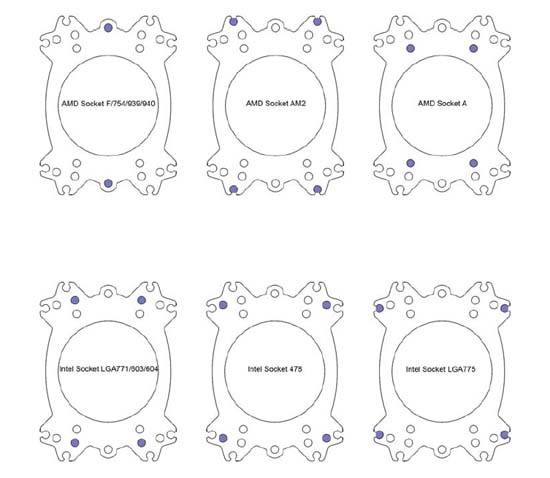
The CPU-330 water block retention system is designed in such a way that it can work with just about any socket. All you have to do is reference the chart in the instruction book to find the right set of holes.
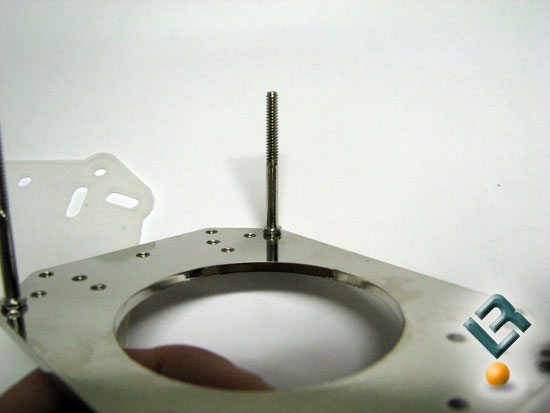
Once you have the correct hole pattern for your CPU you then install the retaining studs. These just screw into the backing plate. At the bottom of the stud there is a hex to aid in tightening, but to me this hex could pose an issue as it is fairly tall for something that is going to be between the board and backing plate.
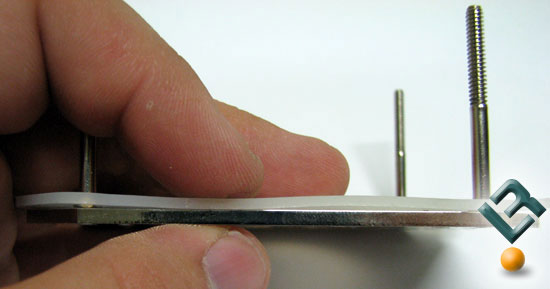
Next to be installed is the silicon insulator, again more thickness.
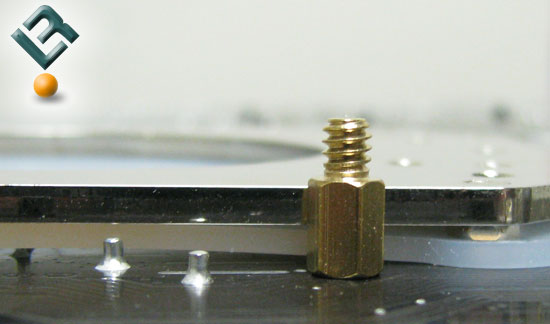
With the backing plate on a motherboard we can see how one can have some issues. First, lets look on the left. The leads from the motherboard components on one side of the socket are keeping the plate from sitting flat. Then on the right we can see the silicon pad didnt set right due to the hex. This is all easy stuff to fix, just annoying. I also threw a standard motherboard tray stand off into the picture so you can get a good feel of just how thick this combination is. One could run into issues of the board not mounting properly in a case if the backing plate is not sitting flat against the board.
The Test System
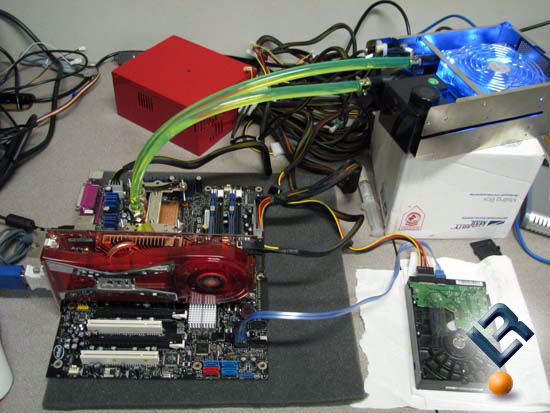
To test the cooler we ran it on our Intel Core 2 Quad test platform, which was then run at default and overclocked settings. We will be comparing the Koolance CPU-330 to the CPU water block of the Thermaltake Big Water 760i cooling system. All the temperatures were obtained by using Core Temp 0.95 after sitting at idle for 30 minutes and then again under 100% load for 30 minutes. To obtain 100% load, I ran four instances of Super Pi 32m calculation with the affinity of each set to a different core. I used two profiles to test all the coolers and they are listed below. The room temperature was kept a constant 72 degrees Fahrenheit (22c) for all benchmarking. All of the coolers were tested with Arctic Silver Lumiere as the thermal interface material.
The rest of the system is as follows
- Motherboard: Intel 975XBX2
- CPU: Intel Q6600
- Ram: Kingston Hyper-X DDR2 KHX9600D2/1G
- Hard Drive: Western Digital 250gb SATA
- Case: None, open air on work bench.
- Power Supply: PC Power and Cooling Silencer 750 Quad
Profile 1: The Normal User (No Overclocking)
- CPU Multiplier: 9x
- CPU voltage: 1.2000V
- FSB Voltage: 1.20V
- FSB: 1066MHz
- Memory Voltage: 2.20V
- Final CPU Frequency: 2.4GHz
Profile 2: The Average Enthusiast (Mild Overclocking)
- CPU Multiplier: 9x
- CPU voltage: 1.435V
- FSB Voltage: 1.30V
- FSB: 1336MHz
- Memory Voltage: 2.24V
- Final CPU Frequency: 3.0GHz

Comments are closed.